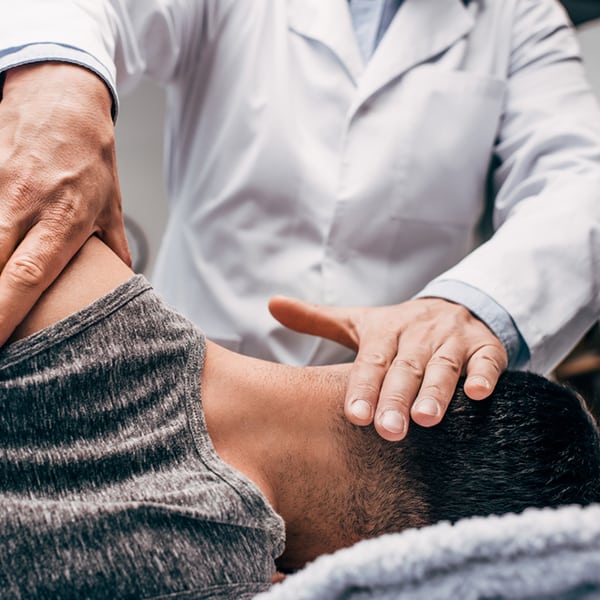Gardening Without Pain: Chiropractic Tips for Outdoor Enthusiasts
You love spending time in your garden, but the aches and pains that follow can be a real downer. To help you enjoy this rewarding hobby without the discomfort, it's vital to understand some effective strategies. Incorporating simple warm-up exercises and utilizing ergonomic tools can make a significant difference. Plus, mastering proper body mechanics will not only enhance your gardening experience but also minimize your risk of injury. Curious about how these tips can transform your time outdoors? Let's explore some essential practices that could change the way https://www.zahnchiropractic.com/ chiropractic frisco you garden.

Understanding Gardening-Related Injuries
Gardening can be a rewarding hobby, but it often comes with its fair share of injuries. Whether you're digging, planting, or weeding, you might find yourself facing strains, sprains, or even repetitive motion injuries. These injuries typically occur when you push your body beyond its limits or use improper techniques.
One common issue is lower back pain, which often arises from bending over for extended periods or lifting heavy bags of soil. You might also experience wrist and hand injuries from using tools incorrectly or gripping them too tightly.
Additionally, knee pain can develop from kneeling or squatting without proper support.
It's important to understand that your body needs care, just like your garden. Ignoring signs of discomfort can lead to chronic issues that may hinder your gardening joy. If you feel pain, don't brush it off; listen to your body and take action.
Recognizing these injuries and their causes can help you develop better habits, ensuring your gardening remains a source of joy rather than pain. Taking time to understand these potential pitfalls will set you on a path to a healthier gardening experience.
Essential Warm-Up Exercises
Before you immerse yourself in your gardening tasks, it's crucial to warm up your body. This helps prevent injuries and keeps you feeling great while you work.
Start with some gentle neck rolls to loosen tightness. Stand tall, then slowly roll your head in circles for about 30 seconds in each direction.
Next, focus on your shoulders. Raise them up towards your ears, hold for a moment, then release. Repeat this movement ten times.
After that, try some arm circles. Extend your arms out to the sides and make small circles, gradually increasing the size. Do this for 30 seconds in each direction.
Now, move to your back. Stand with your feet shoulder-width apart and bend slightly at the waist. Gently sway from side to side, holding each position for a few seconds. This stretches your lower back and warms up your core.
Finally, finish with some leg stretches. Stand on one leg and pull your opposite foot towards your glutes, holding for 15 seconds. Switch legs.
Proper Body Mechanics
When you're out in the garden, using proper body mechanics is essential to prevent strain and injuries. Start by positioning yourself correctly for tasks. Bend at the hips and knees, not the waist, to lift heavy items. This way, you engage your leg muscles instead of putting pressure on your back. Keep the load close to your body to maintain balance and reduce stress on your spine.

When digging or planting, squat rather than bending over. This position reduces spinal strain and allows you to use your leg muscles effectively. If you need to reach for something, avoid twisting your torso. Instead, pivot your feet to face the direction you want to go.
Take breaks often to avoid fatigue, which can lead to poor mechanics. Switch tasks frequently to engage different muscle groups and avoid overuse injuries.
Finally, always listen to your body. If you start feeling discomfort, take a step back and reassess your positioning or task. By maintaining proper body mechanics, you'll enjoy your gardening sessions more and keep your body healthy.
Tools to Reduce Strain
Proper body mechanics can greatly reduce the risk of strain, but the right tools can make a world of difference too. When you're gardening, choosing ergonomic tools can help minimize stress on your body.
Look for hand tools with padded grips and longer handles, which allow you to maintain a more comfortable posture while reducing strain on your wrists and back.
Consider investing in a kneeler or garden seat with handles. This not only helps you get up and down easily but also provides support for your knees and back.
A wheeled garden cart can save you from heavy lifting; it lets you transport soil, plants, and tools with ease.
Don't overlook long-reach tools, like extendable pruners or rakes. These allow you to work without bending over excessively, preserving your back health.
Lastly, verify your tools are well-maintained. Sharp blades cut more efficiently, requiring less effort and reducing the chance of strain.
When to Seek Chiropractic Care
Recognizing the signs that you need chiropractic care can be essential for maintaining your well-being, especially after a long day in the garden. If you've been feeling persistent pain in your back, neck, or joints, it's a clear signal to seek help.
Don't ignore that nagging discomfort; it can escalate into something more serious if left untreated.
You should also pay attention to any tingling, numbness, or weakness in your limbs. These symptoms could indicate nerve irritation or other underlying issues that require professional assessment.
If you find it hard to perform daily tasks, like bending over or lifting, that's another sign you might need chiropractic attention.
Moreover, if you're experiencing frequent headaches or muscle spasms, these could stem from poor posture or muscle strain while gardening.
Remember, early intervention can prevent long-term damage and keep you enjoying your outdoor activities.
Lastly, if you've recently had an injury, even if it seems minor, don't wait for the pain to worsen.
Schedule a chiropractic appointment to address any concerns and get back to your gardening without discomfort. Your body will thank you!